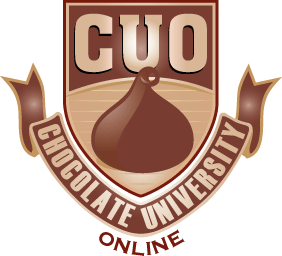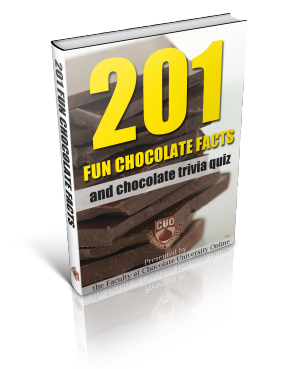Heat-resistant Chocolate
We have all tried buying chocolate on a hot day, only to pull it out of your bag later and find it melted. This problem could now be a thing of the past, at least for some parts of the world.
After almost 10 years of meticulous research, the manufacturers of Cadbury and Toblerone chocolates are claiming they are now nearing launching of a heat-resistant chocolate to the world.
The top chocolate, biscuit and candy company, Mondelez International told Reuters that the product they will be introducing in the near future is able to endure temperatures as high as 104F and not melt.
This heat-resistant chocolate is particularly intended for places that have hot/humid climate such as India, Brazil, and Africa, where food products end up falling victim to the scorching heat of the sun.
They weren’t letting people in on the details about ingredients and taste just yet. However, according to a company executive for the Middle East, Africa and Eastern Europe, the products will be launched very soon.
Other brands within the Mondelez International portfolio include Cote d’Or, Milka, Green & Black’s chocolates, Trident and Dentyne gum and Nabisco.
While it may seem new to many, it’s actually not the first attempt at creating a more durable chocolate product. Premium Swiss chocolate maker Barry Callebaut launched the Volcano before, the chocolate that has a higher melting point – 98.6F. This is because of a lower cocoa butter content.
The natural melting point for chocolate is between 86F and 93.2F, lower than human body temperature.
Will there be a difference in taste? Well, coming up with a heat-resitant chocolate that can endure up to 40 degrees celius sans melting has reportedly entailed putting in combinations of cocoa butter, milk, sugar and vegetable oils. That said, yup, there will be a noticeable change in taste.
Categories: chocolate articles Tags: butter, chocolate novelty, cocoa butter, heat-resistant chocolate, modern chocolate, Mondelez International, world
What is the substitute of cocoa butter and how much we should use for i1 cup of sugar for white chocolate?
Question by chhaya r: What is the substitute of cocoa butter and how much we should use for 1 cup of sugar for white chocolate?
I want to make raw white ,dark and milk chocolate at home i want to know the substitute of cocoa butter and the quantity for one cup of coco powder and one cup of sugar in white chocolate .
Best answer:
Answer by 10K.BC
If you don’t have access to cocoa butter, and assuming you aren’t selling it, you can substitute butter or palm oil along with a 40% mix of bee’s wax to harden it up. Basically any saturated fat will work.
If you’re making it for sale though, most countries require you to use a minimum amount of cocoa butter in order to legally call it “chocolate.”
Give your answer to this question below!
Categories: chocolate questions Tags: butter, CHOCOLATE, cocoa, much, Should, substitut, substitute, Sugar, white
Chocolate Melting & Tempering Machine 1.58 Gal
Chocolate Melting & Tempering Machine 1.58 Gal
- 15.74 in. x 12.99 in.
- h 5.31 in. 110V. Capacity 1.58 Gal – Basin 12.59 in. x 1.04 in. h 3.93 in.
- Manual Thermostat to control the temperature desired.
- Removable Stainless Steel basin and lid.
- Thermoresistant plastic material.
Available capacity 0.92 Gal item # MC01110V, 2.37 Gal item # MC03110V, 3.61 Gal item # MC04110V
Melt 70% of your chocolate setting the Melting Machine at 40 – 45°C;
Wait until the chocolate will be melt completely while checking the thermometer. This operation is necessary to have the butter crystals melt;
Add the rest 30% of your chocolate to the mixture already melt. This procedure represents the insemination of cocoa butter present in the chocolate;
Mix strongly the chocolate in order to lower its temperature: The ideal temperature is different depending on the type of chocolate that we are working
Dark chocolate 32° – Milk chocolate 30° – White chocolate 29°. By lowering the temperature of the chocolate we have the stabilization of the cocoa butter crystals;
Once reached the right temperature, you need only to keep this temperature for the required time to work it.
Advantages of the well temperated chocolate:
The removal of the praline will be easier and it will look shinier because the sugars and the cocoa butter will not appear on the surface causing that unpleasant white coating;
The praline or the chocolate bar will have that crunchy effect when you break it or bite it;
The praline will not melt in your hands.
In case the surface of the chocolate in the basin should start hardening, because of the room temperature, just use the hair-dryer to melt it. Do not increase the temperature!!!
The same technique can be used if the temperature of the chocolate starts going down. In this way you catch up the temperature. If the temperature increased, act on the thermostat and lower 2 – 3 degrees, mixing the chocolate.
KEEP the chocolate always stirred to have the butter crystal stable.
DO NOT PUT pieces of chocolate left from molding into the tempering machine!!!!
Keep them for next time while starting the whole procedure from the beginning. The reason is due to the cocoa butter stabilization.
List Price: $ 1,120.00
Price:
Related Chocolate Making Products
Cocoa Butter (Chips) – Germany
Cocoa Butter (Chips) – Germany
- 7.5 oz resealable bag of these fantastic Cocoa Butter Chips!
- Sold exclusively by ChefShop.com!
- Cocoa butter is used to make chocolate, especially dark chocolate, smoother and creamier, and also more pourable for coating cakes, pastries and truffles.
- Cocoa butter is also used to add smoothness and flavor to some other foods and also in making soaps and cosmetics.
- The more you buy the less it costs to ship (on a per item basis), when it all comes from ChefShop.com. Click on the ChefShop link below the product name to see what else we have!
7.5 oz – Cocoa Butter Chips
Cocoa butter is the natural, cream-colored vegetable fat extracted from cocoa beans during the proces of making chocolate and cocoa powder. For most eating chocolate, some cocoa butter is then added back to the mixture.
Cocoa butter is used to make chocolate, especially dark chocolate, smoother and creamier, and also more pourable for coating cakes, pastries and truffles. The higher the quality of cocoa bean the butter is extracted from, the better the cocoa butter will be.
Cocoa butter is also used to add smoothness and flavor to some other foods and also in making soaps and cosmetics.
*QUICK TIP* If you’re looking to give your hot cocoa a richer mouthfeel, try stirring in 1/2-1 teaspoon of cocoa butter!
List Price: $ 11.29
Price:
Categories: chocolate products Tags: butter, chips, cocoa, Germany
Ecuadorian Truly Raw Cacao Butter, 16oz – Pacari Chocolate
Ecuadorian Truly Raw Cacao Butter, 16oz – Pacari Chocolate
- Certified Organic
- Vegan and Raw
- No chemicals, no hexane, no solvents
- Packed with Nutrition
- 100% pure love. 100% pure sensual joy
Cacao Butter is what white chocolate is made of! Our raw, certified organic, chemical-free cacao butter is the pure oil of the cacao bean. Cacao Butter (Organic, Raw) 1lb Ingredients: Certified Organic Raw Cacao Butter (Vegan.) Contains no chemicals, no hexane and no solvents. Storage: Store in a cool, dry place. Our raw organic cacao butter has a high level of stability and a long shelf-life (over a year). Suggested Uses: Cacao butter is edible and possesses an extraordinary rich, delicate chocolate aroma. Add a piece of this butter to your favorite smoothie, dessert, ice cream or chocolate creation. Because it has not been damaged by heat, our cacao butter melts easily and blends nicely into any type of recipe. Cacao Butter makes a great dessert when mixed with coconut oil, agave and cacao. Cacao Butter may be used as a skin moisturizer. It may be used as (or in conjunction with) a massage oil. What is Raw Cacao Butter? Our Cacao butter is created through a proprietary cold-pressed method. This process begins by cold-pressing the organic Cacao Nibs into a “cake” in such a way that the oil begins to separate from the protein and fiber. The temperature is never allowed to exceed (or even reach) 120 degrees Fahrenheit and is usually 104 degrees Fahrenheit (all other cacao butters are exposed to temperatures as high as 300 degrees Fahrenheit!) A high-accuracy thermometer is used throughout processing. Slowly, the pure, liquid cacao butter begins to sift off into a stainless steel valve that takes the cacao butter into a separate container where it is allowed to solidify in an attractive shape and packaged for shipment! Cacao butter melts at approximately 90 degrees Fahrenheit (35 degrees Celsius.)
List Price: $ 10.00
Price:
Categories: chocolate products Tags: 16oz, butter, Cacao, CHOCOLATE, Ecuadorian, Pacari, Truly
Is White Chocolate Really Chocolate?
Albeit the fact that it is considered ‘chocolate’, white chocolate isn’t really chocolate. It may be a confectionery imitative of chocolate since it’s also made from the same cacao plant, but its manufacturing process is somewhat special.
The process of making white chocolate primarily involves the drawing out of utilizable components of the cacao bean. Unlike the usual chocolate that makes use of the cocoa powder ground from the seeds, the white version uses only the cocoa butter.
Even though the manufacturing of white chocolate is similar with dark and milk chocolate by some means, it basically lacks cocoa paste, liquor or powder. Thus, it does not hold the important compounds of chocolate such as thiamine, riboflavin, theobromine, phenylethylamine, and serotonin.
According to the U.S. Food and Drug Administration, to be called ‘chocolate’, a product must have chocolate liquor. Since 2004, white chocolate have to be (by weight) at least 20% cocoa butter, 14% total milk solids, and 3.5% milk fat, and not exceeding 55% sugar or other nutritive carbohydrate sweeteners. The European Union has put the same policy in practice, only, there is no limit on sugar or sweeteners.
White chocolate is made up of cocoa butter, milk solids, vanilla, sugar and lecithin. Chocolate makers that use true cocoa butter generate ones of higher quality in comparison to those who scrimp and substitute vegetable fat for the cocoa butter.
True white chocolate is typically a pale yellow or ivory in appearance. The taste of cream and vanilla is heavenly in the mouth unlike those pretentious white creations that are made up of vegetable fat. Their consistency, taste and shelf life are also extremely different.
White chocolates melt quite easily and burn quickly since it is delicate, so take extra care when melting it for recipes like ganache or chocolate fondue.
Related Chocolatier Articles
Categories: chocolate articles Tags: butter, chocolate facts, chocolate information, process, White Chocolate
Where can I find cocoa butter for chocolate making?
Question by Lillybell: Where can I find cocoa butter for chocolate making?
I’m taking a chocolate making course, and it calls for cocoa butter for the enrobing part (like dipping). It said cocoa butter was made from the fat part of the cocoa bean, or something, and is expensive, but I can’t find anywhere that sells it.
Best answer:
Answer by pinkribbon
Assuming you are in the UK, you could e-mail somebody like Pembertons (see link) and see if they can either sell you some or let you know who their supplier is.
http://www.welshchocolatefarm.com/contact/
Add your own answer in the comments!









